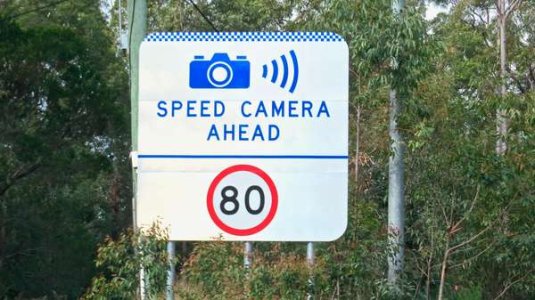What these new road cameras revealed in this state will blow your mind!
- Replies 33
In an age where technology is advancing at a breakneck pace, it's no surprise that it's also being used to enhance road safety.
In Perth, a startling trend has been uncovered thanks to the installation of over 800 new road cameras along the Kwinana Freeway.
These devices, initially set up to ease traffic flow and shorten travel times, have revealed a concerning disregard for basic road rules among drivers.
The cameras, part of a project aimed at reducing congestion and improving safety, were expected to shave off a significant 10 minutes from commuters' journeys.
However, as the technology evolved, these cameras began to serve a dual purpose—not only did they monitor traffic conditions, but they also started to detect when drivers were flouting the law.
The statistics are alarming: an average of 60 people per day were caught not wearing seatbelts, and around 5,000 individuals each month were spotted using their mobile phones while driving.

The Road Safety Commissioner, Adrian Warner, underscored the need to instil a 'fear' of being caught in drivers to encourage compliance with road rules.
‘What we really want is for more people to follow the rules more often,’ he said.
‘Too many people are breaking the rules too often.’
The commission's research suggested that the presence of cameras can create a systemic fear among drivers, leading to better behaviour on the roads.
Warner's comments emphasised the need for drivers to be more concerned about the consequences of their actions, particularly on using mobile phones and wearing seatbelts.
‘That is what we are looking for people: to behave a bit better on the roads,’ he stated.
‘We know phones are a big driver of distraction, and distractions are a big cause of crashes and serious injuries.’
‘You would have to be unlucky to have a police officer going past you, usually on a motorbike in slow-moving traffic, and you are on your phone.’
‘That is where they catch most people in slow or stopped traffic,’ he added.
During a trial conducted by the commission using comparable cameras in mobile trailers, Mr Warner stated that they identified around 12,000 individuals not wearing seat belts over several months.
‘The facts on seat belts are pretty compelling, we know about 95 per cent of people wear seat belts, which is a matter of rule,’ he said.
‘If we look at the stats and fatalities on roads, about 25 people a year are dying on average in crashes not wearing a seat belt. If we took all the people in motor vehicle accidents who are dying, that is 25 per cent of people.’
‘We know that 20 to 25 per cent of people is way overrepresented.’
‘That is 1 per cent of people not wearing a seat belt turning into 25 per cent of deaths on our roads.’
‘That is why we think using cameras on our roads is going to be a really big gamechanger for seat belt compliance,’ he added.
The revelation of startling trends captured by new road cameras in Western Australia underscores the increasing reliance on technology for traffic enforcement and safety measures.
As authorities deploy innovative methods to monitor and regulate road behaviour, motorists may have noticed a surge in the presence of mobile speed cameras during their summer road trips.
Understanding how these cameras operate is essential for drivers to navigate the roads safely, and avoid potential penalties.
 Do you believe that the fear of being caught is an effective deterrent for breaking road rules? Share your opinions in the comments below.
Do you believe that the fear of being caught is an effective deterrent for breaking road rules? Share your opinions in the comments below.
In Perth, a startling trend has been uncovered thanks to the installation of over 800 new road cameras along the Kwinana Freeway.
These devices, initially set up to ease traffic flow and shorten travel times, have revealed a concerning disregard for basic road rules among drivers.
The cameras, part of a project aimed at reducing congestion and improving safety, were expected to shave off a significant 10 minutes from commuters' journeys.
However, as the technology evolved, these cameras began to serve a dual purpose—not only did they monitor traffic conditions, but they also started to detect when drivers were flouting the law.
The statistics are alarming: an average of 60 people per day were caught not wearing seatbelts, and around 5,000 individuals each month were spotted using their mobile phones while driving.

New road cameras along the Kwinana Freeway in Perth revealed a high number of traffic violators. Credits: Shutterstock
The Road Safety Commissioner, Adrian Warner, underscored the need to instil a 'fear' of being caught in drivers to encourage compliance with road rules.
‘What we really want is for more people to follow the rules more often,’ he said.
‘Too many people are breaking the rules too often.’
The commission's research suggested that the presence of cameras can create a systemic fear among drivers, leading to better behaviour on the roads.
Warner's comments emphasised the need for drivers to be more concerned about the consequences of their actions, particularly on using mobile phones and wearing seatbelts.
‘That is what we are looking for people: to behave a bit better on the roads,’ he stated.
‘We know phones are a big driver of distraction, and distractions are a big cause of crashes and serious injuries.’
‘You would have to be unlucky to have a police officer going past you, usually on a motorbike in slow-moving traffic, and you are on your phone.’
‘That is where they catch most people in slow or stopped traffic,’ he added.
During a trial conducted by the commission using comparable cameras in mobile trailers, Mr Warner stated that they identified around 12,000 individuals not wearing seat belts over several months.
‘The facts on seat belts are pretty compelling, we know about 95 per cent of people wear seat belts, which is a matter of rule,’ he said.
‘If we look at the stats and fatalities on roads, about 25 people a year are dying on average in crashes not wearing a seat belt. If we took all the people in motor vehicle accidents who are dying, that is 25 per cent of people.’
‘We know that 20 to 25 per cent of people is way overrepresented.’
‘That is 1 per cent of people not wearing a seat belt turning into 25 per cent of deaths on our roads.’
‘That is why we think using cameras on our roads is going to be a really big gamechanger for seat belt compliance,’ he added.
The revelation of startling trends captured by new road cameras in Western Australia underscores the increasing reliance on technology for traffic enforcement and safety measures.
As authorities deploy innovative methods to monitor and regulate road behaviour, motorists may have noticed a surge in the presence of mobile speed cameras during their summer road trips.
Understanding how these cameras operate is essential for drivers to navigate the roads safely, and avoid potential penalties.
Key Takeaways
- New road cameras along the Kwinana Freeway in Perth revealed high incidences of drivers speeding, not wearing seatbelts, and using their mobile phones.
- Authorities plan to begin issuing fines using these cameras to target moving traffic offences later in the year.
- Road Safety Commissioner Adrian Warner emphasised the importance of 'fear' in deterring people from breaking the rules, and hopes improved enforcement will lead to better road behaviour.
- Research indicated a significant discrepancy in seatbelt compliance and road fatalities, with non-compliance contributing disproportionately to deaths, leading to the belief that camera enforcement will significantly improve seatbelt use.







